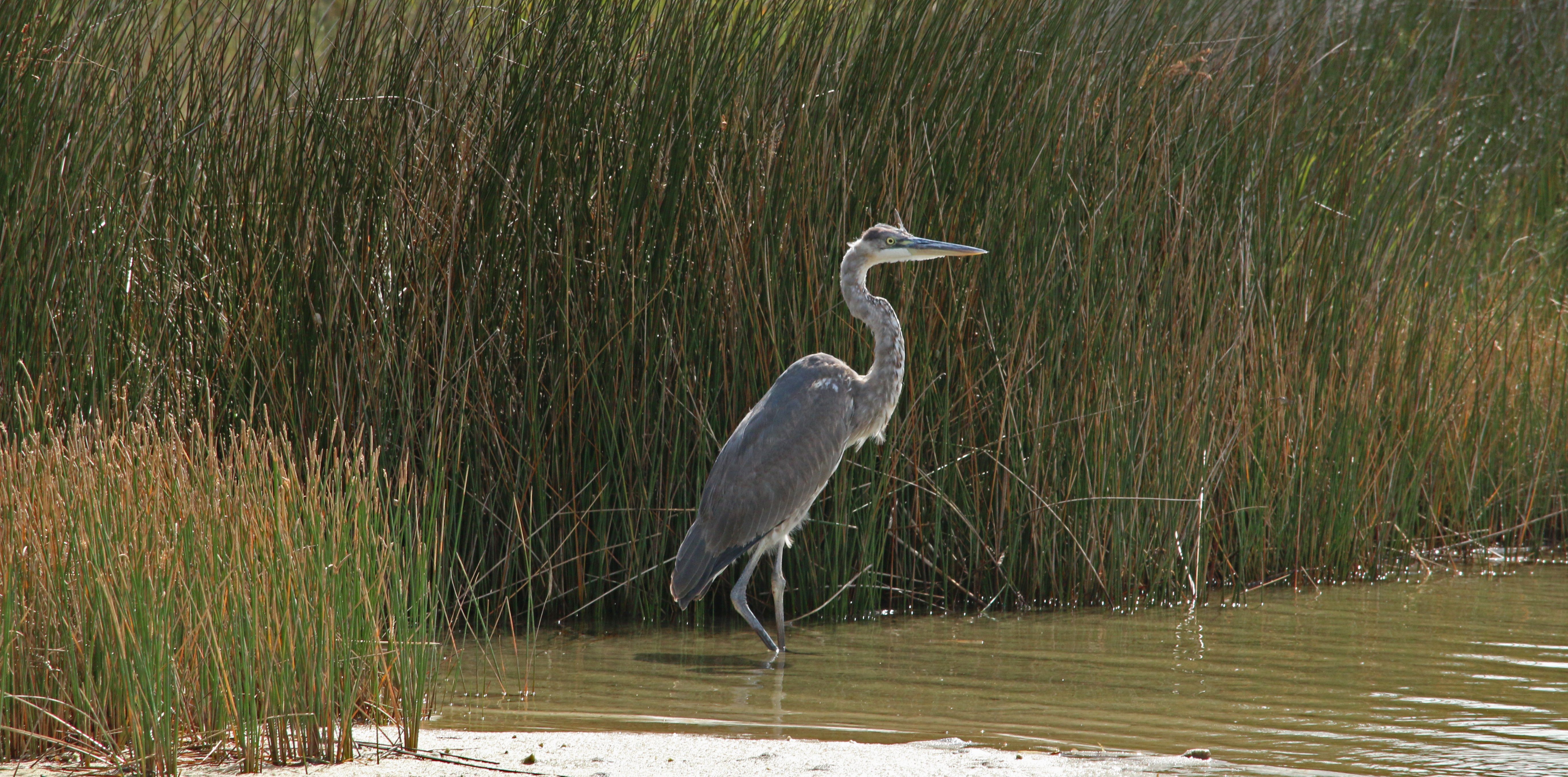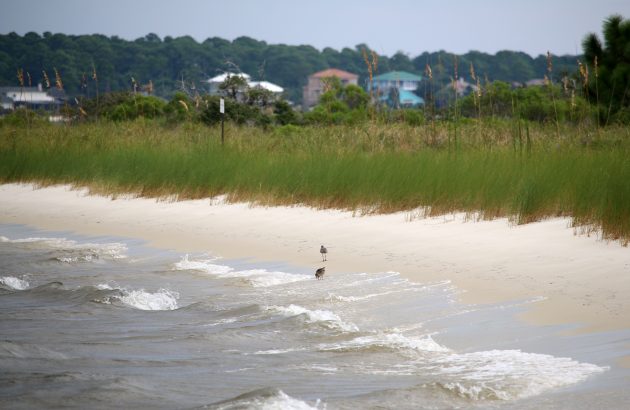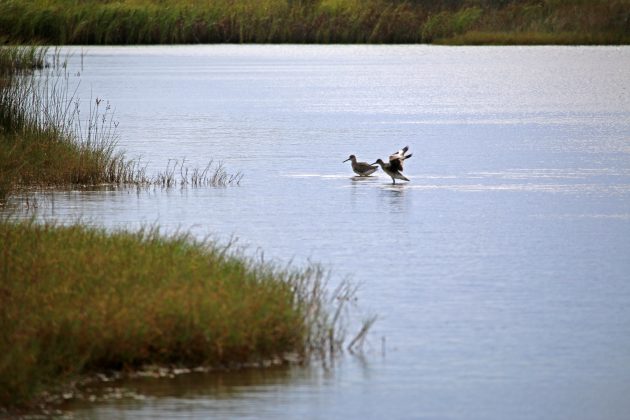
I was lucky. Living so far west in the Panhandle, projections of Hurricane Irma’s path never crossed near Pensacola. Though we could breath a sigh of relief outside the famous “cone of uncertainty,” it has been heartbreaking to watch the devastation wrought in South Florida, the flooding up and down the eastern seaboard and Gulf Coast, and now Maria’s wrath in Puerto Rico and the Caribbean.
Still, I knew the winds of the hurricane could bring interesting bird species, so I ventured out Saturday morning, a day and a half before the meat of the storm made it up to northern Florida.
The wind whistled through the dune grasses and low bushes on the Santa Rosa Sound side of Navarre Beach Park, where I began a three-mile birding loop. Few birds other than Laughing Gulls ventured out into the stiff breeze, and when they did they looked like they clearly regretted it. Multiple Great Blue Herons hunkered down at the edge of thick vegetation surrounding small ponds, determined to stay out of the gusts. A handful of intrepid shorebirds fed along the lapping waves, including a Sanderling, Snowy Plover, and a few Black-bellied Plovers, Willets, and dowitchers. Because I was far out of danger, I could appreciate the power of the windspeeds, whipping up storm clouds before whisking them away again, far across the horizon. A few times the sand was thrown up at my uncovered legs, stinging, but I felt mostly awe at my surroundings. As if a nod to my quiet appreciation for the force of nature, a lone Bald Eagle opened great wings and sailed across the sound, heedless of the breeze trying to push it back.

Waves crash along Navarre Beach Park.
I walked as far as I could along the sound before bushes too close to the water blocked my path and I doubled back, taking a small, sandy trail across the barrier island to the Gulf of Mexico beach on the other side. Here the waves raised themselves like giants before crashing into each other in a great froth of white, the sun slipping in and out of cloudcover to reveal the beautiful emerald hues the Gulf is known for in this region. Now, Sandwich Terns and Black Skimmers hunkered down in the sand with their Laughing Gull compatriots, content to wait it out for the next few days. An entire flock of Sanderlings – normally the most active of the avian beach residents – hid themselves in cups of sand within the dune, the group almost melting into the landscape itself.
Only the smaller terns seemed unafraid of the racing wind, using its force to torpedo them down the beach. They weren’t the only creatures determine to bend the power of the hurricane to their will (at least for a moment); hordes of surfers had descended on the beach, happily cruising across the waves on boards that often lay dormant in calm Gulf weather. I assumed this was why the two lifeguard stands were full, trained staff ready for rescue if the rip tide or waves threatened to take a less experienced – or less lucky – surfer out to sea.

Two Willets ready to fly.
Like most birders, I walk slowly as I watch, and it took me nearly an hour and a half to complete a three-mile loop. Despite the rough weather – and rougher still to come – I tallied over 20 species. I would never wish the horror of a hurricane on anyone – and again, I felt little of its wrath – but from the edges of the storm both the birds and the people felt the stirrings of uncontrollable nature. I know I was mesmerized by the show!











Having ridden out several hurricanes here on the Baja, in Mexico, I often wonder where all my favorite birds have hunkered down. Even The frigatebirds, who tend to be present in some of our strongest Chubascos, disappear when the hurricanes start to build.